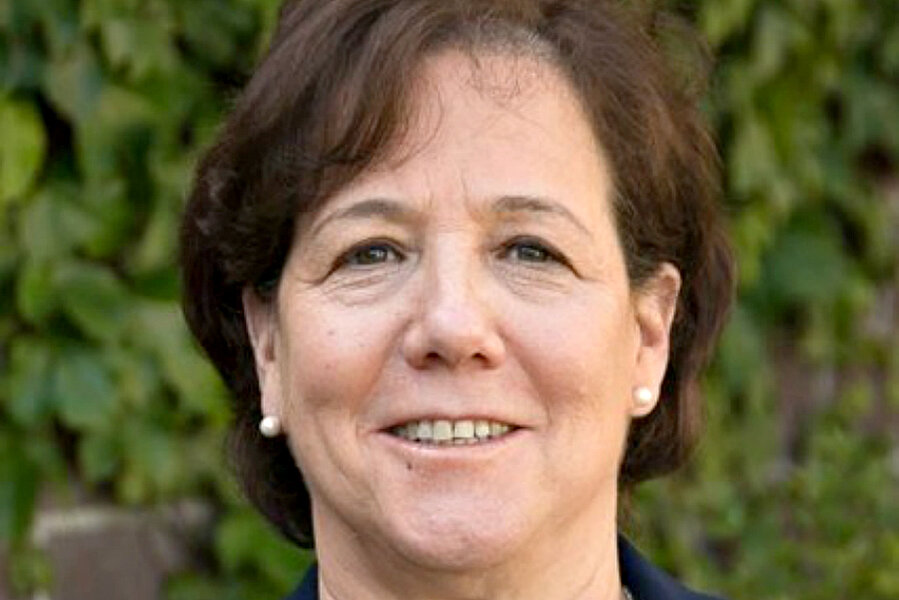Investments in clean energy pay off
Loading...
At the center of MIT’s sprawling campus in Cambridge, Mass., the Barker Library dome rises as a proud symbol of one of the world’s most renowned universities. Over the years, MIT pranksters have hoisted replicas of the Apollo Lunar module, a subway car, even a snowman, on its beloved top.
A century old, this MIT icon now glows with the future.
Dozens of LED lights, each 55 percent more efficient than the incandescent bulbs they replaced, today illuminate the library’s stately reading room beneath the dome. The curved, decorative ceiling soars 75 feet upwards to a recently restored oculus, or 27-foot mosaic of windows, its World War II blackout paint removed. Natural light filters down for the first time in 70 years to students bent intensely over laptops.
The brand new lighting retrofit is part of a comprehensive energy-efficiency program that has already helped the Massachusetts Institute of Technology (MIT) save 34 million kilowatt-hours of electricity between 2010 and 2012, says Megan Kefalis, project manager at MIT’s Department of Facilities. That’s enough energy to power 4,500 Massachusetts homes, and it represents a 15 percent drop in electricity use, saving $4.4 million in energy costs.
To achieve those savings, MIT joined forces with its energy provider, Northeast Utilities, in a multiyear, strategic partnership. It’s the kind of clean energy investment that electric power companies —which produce one-third of the nation’s carbon pollution — are increasingly making to reduce their carbon footprints and build a more resilient network.
Northeast Utilities has strategic partnerships with more than a dozen of its largest customers, including supermarket chain Stop and Shop, the City of Springfield, Mass., and the Boston Medical Center, though MIT was its first early adopter.
“I’ve watched our energy-efficiency budgets go from very modest to half a billion dollars annually in the three states that we cover,” says Penni Conner, senior vice president and chief customer service officer at Northeast Utilities.
Nationally, electric sector investments in energy efficiency have steadily risen over the past five years to $7.2 billion in 2013. They are generating returns of $3 to $4 for every dollar invested.
A comparable expenditure for renewable energy investments is harder to find because the data isn’t reported, but recent research by Ceres shows that renewable energy sales averaged about 5 percent of total sales for the country’s 32 largest power providers. In the case of Xcel Energy, NV Energy, PG&E, Sempra Energy, and Edison International, renewable energy accounted for about 17 to 21 percent of their total electricity sales in 2012.
These companies are moving us closer to the global goal of boosting clean energy investments to $1 trillion a year by 2030 — what Ceres calls the “Clean Trillion.” It’s the necessary investment level to avoid major climate disruption, according to scientists and world leaders who will gather at a United Nations Climate Summit in New York Sept. 23.
At current clean energy investment levels, global temperatures are projected to increase four to five degrees Celsius, a potentially catastrophic scenario for the global environment and the economy.
Electric utilities making the biggest gains on energy efficiency and renewable energy are often in states with strong clean energy policies, such as California, Colorado, Massachusetts, and Arizona.
Take National Grid, one of the world’s largest energy delivery companies servicing New York, Rhode Island, and Massachusetts. Its business approach, called Connect21, emphasizes energy efficiency, renewable energy, grid modernization, and empowering consumers to manage their own energy use.
“Large-scale energy efficiency is by far the best investment,” says Tom King, US president of National Grid, which is spending $450 million annually on energy efficiency. “However, we have to make sure we have a long-term view on resources, and we don’t want to create the future on an antiquated network.”
National Grid has power purchase agreements with major wind projects in Massachusetts and Rhode Island, and also is investing $40 million in Clean Line Energy, a company developing transmission lines to move vast amounts of wind power from Kansas, Texas, and Oklahoma to big population centers. Each of its four or five transmission lines will move 2,000 megawatts of wind at an investment of $2 billion to $3 billion each.
Power providers like American Electric Power in Ohio are also increasingly tapping into wind power from the gusty panhandle region.
Further west, power providers in California and Nevada are tapping those states’ vast solar resources, achieving renewable energy sales up to 20 percent.
Another encouraging trend: More renewable energy installations means lower prices – even in states such as Minnesota, where a 100-megawatt solar project recently beat out several natural gas proposals.
“I’m hugely excited and see nothing but opportunity for both job development and economic development, and cleaning up the environment in making these investments,” Mr.. King told us this month.
Ms. Conner agrees. As a judge for MIT’s prestigious national clean energy prize competition, she’s seen 30 prize winners go on to launch promising companies, like lithium-iron batterymaker A123 Systems, attracting more than $90 million in venture capital. “I envision the clean energy space will continue to grow tremendously,” she says.
• Mindy Lubber is the president of Ceres, a Boston-based nonprofit organization that advocates for sustainability leadership. Ceres mobilizes investor and business leadership to build a thriving, sustainable global economy.







